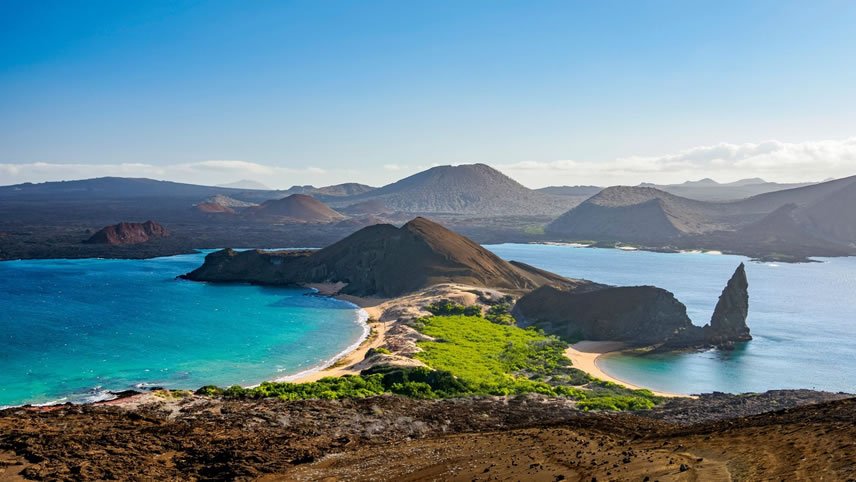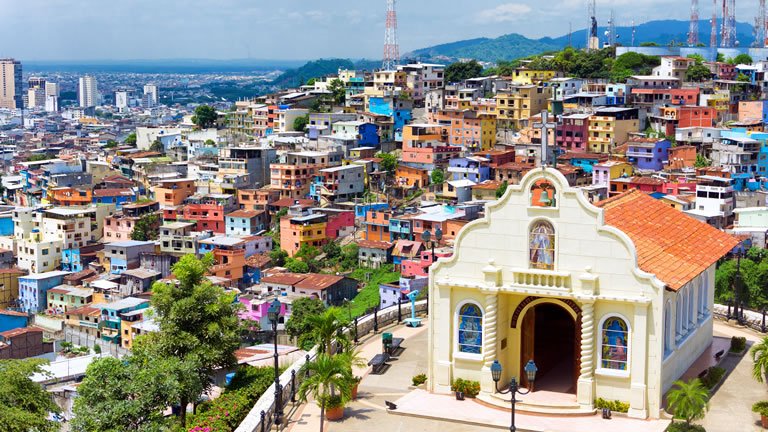Overview
Itinerary
Your expedition starts in Quito, the capital of Ecuador and the country's most populous city. Situated on the eastern side of Pichincha, a volcano in the Andes, at an elevation of 2,850 metres above sea level, it is the second highest capital city in the world. It is also the closest capital city to the Equator, which of course when translated into Spanish is Ecuador. Originally settled by the Quitu tribe in the first millennium, Quito was eventually integrated into the Inca Empire before being refounded in 1534 by Spanish conqueror Sebastian de Benalcásar.
Take a walk around the city's historic centre to see splendidly restored period buildings and colonial-era churches lining the narrow, cobbled streets. You'll understand why Quito's historic centre is described as the largest, least-altered, and best-preserved historic areas in the Americas. For those reasons, it was among the first places to ever be declared a UNESCO World Heritage Site in 1978. The first night of your adventure is spent at a centrally located hotel.
Once you have enjoyed your breakfast, we´ll take you to the charming colonial quarter and enjoy a sightseeing tour of the area. Starting with Plaza San Francisco, we´ll visit the Church choir and patios of the Franciscan order. We´ll then stroll through the handsome streets to the Jesuit church of La Compañía with its stunning gold-leaf interior
A trip to Ecuador wouldn't be complete without a photo depicting one foot in the northern hemisphere and another in the southern hemisphere. Continue by coach to the Middle of the World City, located just 8.3 mi (13.5 km) north of Quito, that stands to honor the Geodesic Mission that established latitude 0 in the 18th century. Depending on the time available, you´ll be able to visit the surroundings of the small village. You will also have the opportunity to visit the the Intiñan Museum, offering an ecological and scientific discovery space that transports visitors back to ancient times, allowing them to learn about the worldview, customs and traditions of ancient cultures.
Lunch is served at El Crater restaurant which overlooks Pululahua Volcano. In the afternoon you´ll return to your hotel in Quito.
Dinner will be served at the hotel and the evening is spent at your leisure.
You'll start your day with breakfast at the hotel before we drive to Quito Airport for the flight to the Galápagos Islands (via Guayaquil). When we arrive at Baltra's airport, our local representative will transfer you to Itabaca Channel where a small ferry brings you to the island of Santa Cruz.
We'll travel through a rural agricultural area surrounded by wild landscapes and many different species of flora and fauna. If you are lucky, you might spot a few of the famous finches which inspired Darwin's theory of evolution. The highlands are one of the best places on the island to observe giant tortoises in their natural habitat. Easy to spot, they lumber around eating grass and leaves and wallow in the small, muddy rain-formed pools. Younger ones tend to be smaller with shinier carapaces while the larger, older ones wear weathered and worn shells like the distinguished armour of a long life – over 100 years in the wild. Enjoy lunch in the Highlands.
Once you've settled into your hotel in the town of Puerto Ayora, we'll walk to the nearby Charles Darwin Research Station. The station hosts educational museums on both the history and development of the Galápagos Islands and the range of protections given to this natural heritage. Native giant land tortoises can also be observed here, and the station is the only place in the Galápagos where most of the different species reside at one site.
The afternoon is at your leisure to explore the small, picturesque Puerto Ayora and its many local arts and crafts shops. See the colourful murals at the churches around town or take a short walk to Tortuga Bay to look for marine iguanas, crabs, and white tip reef sharks among the mangroves. Dinner will be served at the hotel´s restaurant.
After breakfast, we'll begin to explore the islands that have become synonymous with the theory of evolution and hailed as a natural laboratory for natural selection. The range of wildlife on display in the islands is mind-boggling, full of endemic species and subspecies from the wonderful to the weird and everything in between. Over two days, you'll visit two islands out of a possible six, going to one island each day by boat. Which ones you'll see will be on the say-so of the park authorities who regulate and assign visitors a month beforehand.
Will it be Bartolomé Island, famous for the dramatic Pinnacle Rock and the rare colony of Galápagos penguins at its base? Or perhaps, it'll be North Seymour Island, site of large populations of the hilarious blue-footed boobies, swallow-tailed gulls and magnificent frigatebirds? Santa Fe Island is known to have some of the most beautiful coves in the archipelago with beaches covered in lounging sea lions. Or maybe you'll go to South Plaza Island where a growing colony of land iguanas roam among the prickly pear cactus trees.
It's clear that whichever two islands you get to set foot on and explore, you're in for a real treat! You'll go on walks ashore and learn about the island's geology, human history, and the exceptionally diverse wildlife all around you. After two days, you'll understand just why Darwin was so impressed by the islands and why they inspired his world-changing theory.
After eating breakfast at the hotel, it'll be time to make our way to Baltra airport to fly to Guayaquil. We´ll continue from there to Lima, where our local guide will transfer you to your hotel in the city. Dinner will be served at the hotel before you spend the night there.
After a good night's sleep in this historic city originally known as La Ciudad de los Reyes, or ‘The City of Kings', wake up to breakfast at the hotel. Once you've checked out, you'll take a half-day tour of Lima's sights, including a visit to the city's UNESCO-listed historic centre. Some of the tour's highlights include Plaza San Martin, Plaza Mayor, the Government Palace, and Santo Domingo Convent, the best-preserved colonial building in all of Lima.
Our visit continues with a stop at the Larco Museum, for an excellent overview of Peru's ancient past as it holds the best private collection of pre-Columbian art in the country.
Lunch will be enjoyed in a typical Peruvian restaurant.
The tour finishes at the quayside in Callao where your expedition ship awaits you.
Once on board, you'll check-in, run through an important safety drill and have time to settle into your cabin and look around the ship. Later, meet the Captain, crew and your Expedition Team at the welcome dinner and raise a glass to toast to the adventures ahead. The day ends with a briefing from the Expedition Leader and Hotel Manager, and maybe a few more drinks in the Explorer Lounge and Bar with fellow guests!
Buffeted by the wind and waves of the Pacific, Salaverry can be a hard port to access. If all goes to plan though, it will be a good transit point to explore Trujillo, Peru's third largest city, as well as an array of archaeological sites scattered throughout the surrounding region.
Trujillo sits in a fertile valley oasis irrigated by the Moche River. It boasts a colourful baroque 17th century cathedral, 10 colonial churches, and many neoclassical mansions, not to mention one of the longest mosaic murals in the world at the local university. However, it is more than likely that your focus will be elsewhere and on things not so modern.
The city of Chan Chan was raised by the Chimu Empire which appeared in the region around 900 AD. The vast ruins of the 20-square kilometre complex include the Tschudi temple-citadel and Huaca Esmeralda. On the other side of Trujillo are the Mochican pyramids of the Sun and the Moon which pre-date Chan Chan by a few hundred years. Huaca del Sol in particular is the largest adobe structure on the continent while Huaca del Luna is more detailed with many of its pastel frescos still visible.
As we leave Peru behind and set sail for Ecuador, enjoy another day at your leisure aboard the ship. Spend part of your day walking out on deck, enjoying the seascapes and keeping an eye out for marine wildlife like whales, dolphins and sea birds. If you want to feel closer to the water, go for a dip in the outdoor hot tubs, and still be able to admire the scenery.
This is also a great opportunity to head to the Science Center for lectures with the Expedition Team and to learn more about what you will experience in the following days. Pick one of the proposed Citizen Science programmes to get involved in too, knowing that you will be helping research currently happening around the world. When darkness falls and it's a starry night, you might also join the Expedition Team out on deck to do some stargazing. Or settle into a comfortable seat in the Explorer Lounge & Bar to raise a glass or two with new-found friends.
Machala's main claim to fame is Puerto Bolivar, an important Ecuadorian port for the export of coffee, cocoa, shrimp and bountiful bananas which the locals call oro verde – ‘green gold'. As part of a choice of optional excursions, you can visit a local banana plantation and also try and spot hummingbirds, parakeets and howler monkeys in Buenaventura Nature Reserve to the south. Puyango Petrified Forest is nearby with one of the largest collections of fossilised trees in the world, thought to be about 100 million years-old, as old as the Andes Mountains themselves.
At Puerto Bolivar, you can feast on fresh seafood at one of the many harbour restaurants and enjoy views of the natural mangrove swamps of Isla Jambeli opposite. Machala itself has all the charm you'd expect from a small coastal city, including friendly locals, cute plazas and unusual monuments dedicated to sort-fish and bananeros. The restaurants are evolving and beginning to dabble in the hip modern cuisine which Ecuador and Peru are increasingly known for.
Manta is a busy and prosperous port city with high-rise buildings, resort hotels, and a couple of casinos. It is well known in the world of water sports for its long stretches of beach that are blessed with the kind of wind and waves that draw surfers, body-boarders and kitesurfers from across the globe. Casual beachgoers normally hang around the shops, restaurants and bars of Malencón Escénico at Playa el Murcielago. You can also head to San Lorenzo for surfer-sweet swells or to Playa Bonita at Santa Marianita to watch kitesurfers take off into sea and sky.
Aside from tourism, the city thrives on an industry of tuna fishing and canning, and typically for a coastal city, seafood is the speciality of many restaurants in the area. Expect wild-caught succulent shrimp, black clams, octopus, red snappers and so on. You should make a point to try a bowl of the local encebollado broth made with the fresh tuna Manta is so proud of. The Museo Municipal Etnografico Cancebi showcases Ecuadorian art and artefacts from local pre-Colombian civilisation, including ancient fishing tools. You might also like to visit the nearby handicraft town of Montecristi where traditional Panamanian straw hats were first created and still hand woven to this day.
A day at sea means you can attend interesting lectures, learn basic expedition photography, attend an art workshop, and enjoy the fresh sea air out on deck as you scout for wildlife. You can also use microscopes in the Science Center to analyse samples taken during the cruise. As we cross the Equator, it's the tradition of Norwegian sailors to hold a ceremony to seek King Neptune's blessing. If we're in luck, he may even make an appearance.
By this stage of your journey, you'll have made friends with your fellow explorers, finding that you have much in common in terms of your interests and passion for nature. You can spend time chatting with them over a snack, perhaps recalling the best bits of your expedition so far. The Explorer Bar is also open for drinks and you might catch the crew and Expedition Team here in the evening for some friendly banter. As night falls, there are also few things as romantic as stargazing out on deck with your loved one.
Today we will sail the Panama Canal, transiting from the Pacific Ocean to the Caribbean. The complex canal network is over a hundred years in the making, stretching 80 km through natural and man-made waterways. We'll wait with anticipation for our allocated slot to enter the first of a series of huge locks. In a feat of modern engineering, these ingenious locks effectively lift the ship more than 26 metres above sea level. If weather allows, the Expedition Team will be out on deck to point out sites of interest around the canal and to talk about the history of this ambitious project.
Roughly half way through the 12-hour transit of the canal, the ship will enter the Gatun Lake section. Created by damning the nearby Chagres River, it is one of the largest artificial lakes in the world. By contrast, the surrounding rainforest is virtually untouched by any development and various flora and fauna native to Central America flourish here undisturbed. Along the shores, you might be lucky enough to spot crocodiles and alligators. Scan the trees for glimpses of monkeys and maybe sloths too.
After a few more locks and lakes, the ship will eventually sail into the Caribbean Sea and the Atlantic Ocean. Passing from one great ocean to another in a day, you've just experienced the culmination of centuries of planning, hard work and resourcefulness. It's sure to be a moment you won't soon forget.
Y
our expedition cruise concludes at the Caribbean entrance to the Panama Canal. This bustling port town is a popular stop for cruises going to the Caribbean and has a diverse population for its small size.
If you're not quite ready to see an end to your adventure, add on three extra nights with our Post-Programme, staying at an exotic jungle lodge nestled in the rainforest next to Chagres River. During your stay, you'll visit a rainforest centre and a farm working with reforestation, explore the jungle on a night boat safari, and enjoy views of the area by cable car.
There's also another Post-Programme option to Casco Viejo, arguably the most charismatic neighbourhood in Panama City. Stroll the rustic cobblestone streets and plazas, admire the architecture of colonial churches, mansions and the Metropolitan Cathedral, and try out some of the local specialities like coffee and cocoa.
You can even book another expedition cruise from here that takes you through the ingenious man-made locks of the Panama Canal and through to the Pacific Ocean on the other side. You can then explore the many sights and coastal cities of South America.
Whatever's next for you, we wish you a safe onward journey and look forward to seeing you on your next adventure!
Life Onboard MS Fram

Purpose built for a pure expedition experience and offering a comfortable base camp for remote exploration. Read more

Enjoy a fascinating onboard program and exciting excursions delivered by your dedicated Expedition Team. Read more
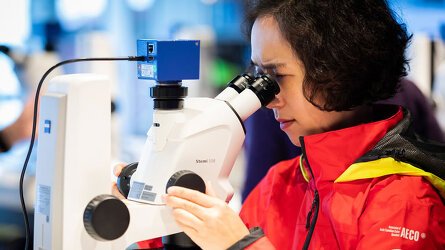
The home of edutainment and scientific learning on board, complete with lecture spaces and specialist equipment. Read more
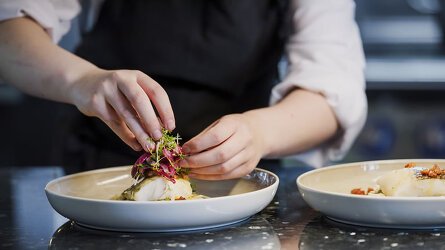
Enjoy homely flavours in the informal main dining room and gourmet Nordic cuisine in the Scandi-chic specialty restaurant. Read more
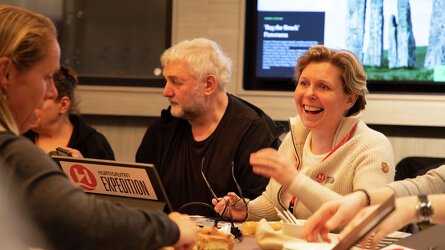
Experience a famously relaxed cruise complemented by a sense of cosiness, comfort, and contentment. Read more

Facilities include a gym, outdoor hot tubs, and a soothing sauna. Because even explorers need a comfortable base camp. Read more

Availability Click on prices below to view cabin upgrades and details
Tour & cruises prices are per person. Prices shown have savings applied, are subject to availability and may be withdrawn at any time without notice. Prices and trip information are correct at the time at this point in time, however are subject to confirmation at the time of booking and are subject to change by Hurtigruten. For cruise itineraries, cabin images are sourced from Hurtigruten. These should be treated as indicative only. Cabin inclusions, upholsteries and room layout may differ to the image(s) shown depending on the ship selected and your sailing dates.
Similar Cruises
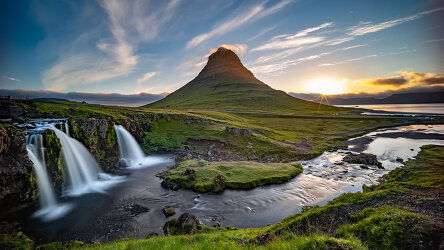
15 Days Reykjavik Hamburg
Operated By: Hurtigruten
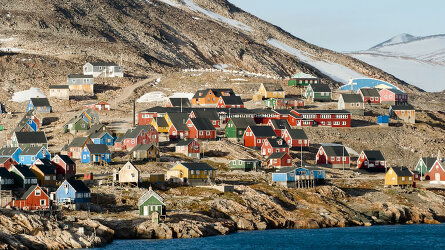
15 Days Reykjavik Reykjavik
Operated By: Hurtigruten
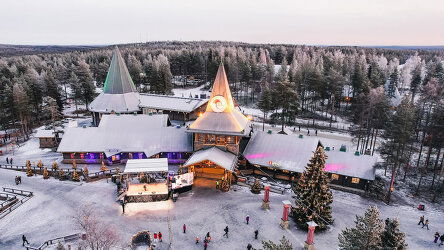
15 Days Stockholm Bergen
Operated By: Hurtigruten

15 Days Colon Valparaiso
Operated By: Hurtigruten
